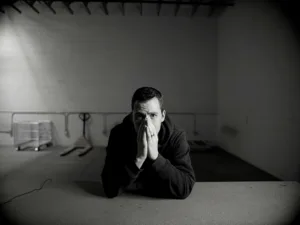Working in a high stress job can take its toll on your mental health. Even with all the training that comes with being a first responder, fire fighter or police officer, no amount of training can prepare you for the realities associated with such a job.
If First Responders Develop Trauma, EMDR Therapy Can Help Reduce It’s Impact
It is important to take stock of your mental state on a regular basis. Checking in with a therapist or your family doctor is a good place to start. Note ways that you might feel different than normal. If your partner or family members are telling you the same things over and over, there also may be some truth in the behaviors that they are noticing. It’s nothing to be ashamed of, but it’s something to have a look at.
What Does Trauma Look Like for First Responders?
You may experience regular stress related reactions to certain events. Or more serious issues can arise. Post traumatic stress disorder is a common side effect of working in high stress situations. Exposure to traumatic events the likes of which first responders encounter on a daily basis can lead to the development of this disorder. Trauma can appear in behavior by being extra quiet, withdrawn, afraid, disengaged, easily agitated, and frustrated for example.
When Trauma Turns into PTSD
Post traumatic stress disorder is a psychological disorder associated with painful or traumatic memories. It is often seen in people who work in incredibly high stress situations, like first responders. It is also very common in police officers and soldiers.
Generally, a person with PTSD will be triggered by certain stimuli. It could be a place, driving past the scene of an horrific car accident where a paramedic witnessed the death of a patient. It could be a sound like the sound of a gun being fired or even a car backfire may trigger a soldier to re-experience the horror of war.
Processing Emotions and Stimuli is Intense with PTSD
These stimuli cause the sufferer to be bombarded with painful memories of whatever the root cause of their disorder is. This can cause them to avoid certain places or people. They may also experience nightmares or emotional numbness. They lack the coping mechanisms needed to properly process and move past these overwhelming memories.
Instead they may experience emotional breakdown or an inability to handle the world around them. It can also lead to drug or alcohol abuse in order to cope with increased feelings of anxiousness, guilt, worry or anger. This can make leading a normal and comfortable life very difficult. It is important then to seek treatment. Speak to a doctor about the symptoms and request a referral for therapy.
When First Responders DevELOP Trauma EMDR Therapy Can Help
Thankfully we have developed certain therapies to treat PTSD and help sufferers lead a normal, healthy life. PTSD is absolutly a treatable disorder with the right approach. There are many different kinds of therapies available for the treatment of post traumatic stress disorder.
Eye Movement Desensitization and Reprocessing is one of the most effective and less invasive therapies. There is also Prolonged Exposure and Cognitive Processing Therapy. Some antidepressant medications have been found to effectively treat PTSD, however, symptoms can return when the medication is discontinued.
What is EMDR Therapy and How Can it Help Trauma?
While there are many different therapies available this article will focus solely on EMDR and its positive effects. This is because we have found EMDR to be the most effective PTSD treatment for the men we work with. If you think you are experiencing PTSD symptoms, talk to your doctor about the best course of treatment for you.
Eye movement desensitization and reprocessing, also called EMDR was first introduced in 1980’s by Francine Shapiro. She developed the therapy after years of research with over seventy volunteers. Upon further research she went on to publish a textbook in 1995. This book laid out the eight phases of therapy as developed by Shapiro.
EMDR focuses on bilateral stimulation while the patient recalls painful memories. Originally this would only involve eye movement stimulation. The patient recalls a particularly traumatic memory or event while simultaneously following the therapists hand or other object pass back and forth in their field of vision. Other stimuli have been added throughout the use of the therapy. These include hand tapping or binaural—sound—stimulation.
The Philosophy Behind EMDR Therapy
The idea behind this method is that by engaging other parts of the brain, those associated with REM sleep for example the patient can become desensitized to the traumatic memory. From there they can begin to make positive instead of negative associations.
EMDR has been found to be effective in treating both single event PTSD and multiple event PTSD. Up to eighty-four to ninety percent of single trauma victims were free of PTSD symptoms after three ninety-minute sessions, according to some studies. Additionally seventy seven percent of multiple trauma victims no longer qualified for a PTSD diagnosis after six fifty-minute sessions. As well as seventy seven percent of combat veterans after twelve sessions. More research and studies are ongoing but there is a significant amount of evidence to support the efficacy of EMDR for PTSD patients.
Sometimes the strongest among us need the most help.
Everyday exposure to the worst pain that life has to offer takes it toll. Even the most successful first responders can experience post traumatic stress disorder symptoms from the high stress situations they find themselves in.
The constant pressure to rush to the scene of every accident. Always worried that they might not make it in time. Heading home at the end of a twelve-hour shift only to lay in bed and worry about what’s happening while they aren’t there to help.
There is no shame needing help to cope with these stresses. Further there is no shame in being unable to cope. No one asks to have PTSD. It’s not something anyone can control by being stronger or better. It’s an example of the limitations of the human brain to process trauma.
There is only so much we can take. It is most important to get help, if necessary, talk to coworkers and other people in the same line of work.
More and more people are experiencing these symptoms and this disorder. But help is available and it’s possible with the proper therapy to relieve the symptoms and get back to a normal, healthy life.






